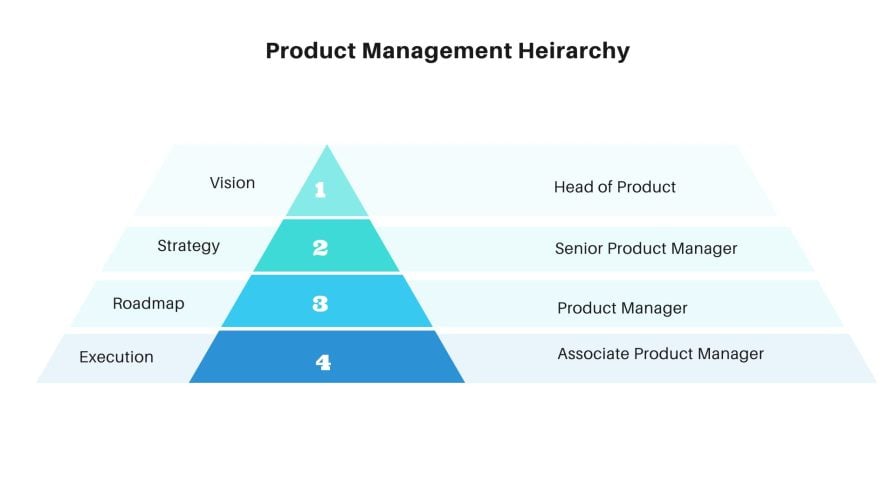Back in 2016 I had a chat with my co-founder about me leaving the startup I had built with her for the last two years. After an emotional conversation, I packed my bags and came back to my city in India from Delhi where my startup was. For three months I had no idea what to do.

As a failed co-founder, I didn’t know which direction I should go. I had studied computer science, but I wasn’t keen on going back to coding since that wasn’t something I enjoyed. I remember getting an email from a recruiter saying, “Hi Aniket, we like your profile. We are looking for an associate product manager at Paytm, would you like to explore the role?”
Back then, I had no idea what this role was. I quickly did a Google search and it didn’t take me long to realize how perfect this role was for me. An intersection of technology, business, and design, wow. I researched a bit more to understand the details of the role. That was my first touchpoint in product management.
I turned up for the interview and to my surprise, cracked it. This specific role was titled an associate product manager. Now that I’ve risen to the level of senior product manager and can connect the dots, I understand the importance of associate product manager.
In this article, you’ll learn more about the importance of associate product manager and how product management can leverage the importance of this role.
Generally, an associate product manager is an entry-level role. It’s meant for individuals who don’t have product management experience, but can grow into this role via training and mentorship. This is also the first step of the product management hierarchy.
APMs (associate product managers) work a lot on the execution part of the product as compared to the roadmap, strategy, and vision, which are the responsibilities of the product manager, senior product manager, and head of product. In this role, an individual gains a lot of knowledge about how to work with engineering, design, and other stakeholders and more importantly, how to work with the users so that once they progress to product manager, they can handle the responsibilities of roadmap and execution on their own:

An associate product manager is primarily responsible for the execution along with the product manager and making sure that the product succeeds. The following are also key responsibilities:
This question isn’t as straightforward as it seems simply because every company, team, and product is different. Paytm was a ten thousand person company back then and there were more than 15 highly scaled products. It had a dire need for PMs who could just focus on execution.
So for Paytm, it made total sense to hire an APM. But would a startup that had just found its product-market fit need an APM? Perhaps not, because in such cases the product manager is focused on the execution, roadmap, and sometimes even strategy (if the company has just a handful of PMs).
However, there are some crucial benefits of hiring an APM:
As mentioned in one of the sections above, an associate product management role is an entry-level role. So no company will expect you to have a product management role. In my case, I had a startup and that already gave me positive points.
Additionally, I had insights about working directly with the users and stakeholders like engineering and design. And so you must have done some level of stakeholder management. Here are some more detailed insights about the qualifications of this role.
I studied computer science and the majority of the applications who get into this role are from this background. However, there are countless examples of people who came from arts or commerce backgrounds and still managed to get into this role. Ideally, a bachelor’s degree in technology or commerce would help you crack an interview call. While a master’s degree is not required, it’s always advantageous.
When I got the offer, I had a total of five years of work experience as a business analyst and a co-founder. Today, this could vary from company to company, but roles where you had some touchpoints to stakeholder management, collaboration with other teams, and user research would already give you a lot of positive points.
I believe more than work experience and educational background, skills are what will help you get into this role. Hard skills such as the use of LogRocket or any other tool, understanding APIs/technical architecture, use of work management tools such as JIRA, Trello, etc., and wireframing tools such as Figma are highly appreciated. And then some important soft skills such as problem-solving, detail-oriented, collaboration, and time management can help you secure a job in this role.
This is my favorite part simply because back then I tried multiple ways to get into this role. Unfortunately, there is no one way and I highly recommend trying and testing different ideas. Here are a few of them:
I also highly recommend being creative to get into an APM role. These days creating podcasts, videos, and blogs is always an interesting way to get into an APM role.
Salary expectations are a little tricky because the salary of an APM would widely depend on the geographical location the person is in. The salaries in the US are very different from the salaries in Vietnam. That said, I have tried to give a broad analysis of the current trends in some of the key locations around the world:
| Location | Avg. salary |
| San Francisco, US | $85,000 – $110,000 |
| London, UK | £40,000 – £60,000 |
| Berlin, Germany | €45,000 – €65,000 |
| Bangalore, India | ₹700,000 – ₹1,200,000 |
| Singapore | SGD 55,000 – SGD 85,000 |
| Dubai | AED 16,400 to AED 19,692 |
Please note that this is not necessarily accurate since the data is gathered from various sources such as Glassdoor and talking to APMs.
Hiring the right APM is extremely important to have good efficiency and build customer-friendly products. Here are some key points to consider:
After hiring, it’s important to focus on the onboarding process to ensure the conditions for success are present within the organization. Keep the following best practices in mind:
As someone who started his career as an APM, I believe this was the best thing that happened to me. If you are an aspiring product manager and don’t know where to start, I highly recommend you go through this article and get into an APM role. You will learn a lot about this very different profession and if you’re a good learner you’ll find yourself climbing up the career path.
For hiring managers, I highly recommend being clear on the responsibilities and expectations and deciding the salary range accordingly. This role can be a great value add and a strong asset if you find the right person for your team.
If you’re an aspiring product manager trying to get into APM and are facing difficulty, feel free to comment and I’ll help you out.
Featured image source: IconScout

LogRocket identifies friction points in the user experience so you can make informed decisions about product and design changes that must happen to hit your goals.
With LogRocket, you can understand the scope of the issues affecting your product and prioritize the changes that need to be made. LogRocket simplifies workflows by allowing Engineering, Product, UX, and Design teams to work from the same data as you, eliminating any confusion about what needs to be done.
Get your teams on the same page — try LogRocket today.

Most teams fail at autonomy. Learn how clear rules help product teams move faster without micromanagement.

A practical framework for PMs to use AI in ideation without sacrificing judgment, strategy, or decision quality.

A practical five minute revenue estimation method to help product managers compare ideas, drop low impact features, and prioritize smarter.

A practical guide for PMs who want to stop being bottlenecks, delegate smarter, and lead teams effectively with a clear ownership framework.